Agents everywhere have trouble breaking even. Reasons are numerous (click here for the easy blog overview and here for MicroSave‘s comprehensive Policy Brief on Indian Business Correspondents), but first and worst among their complaints is how to manage all that tempting, eminently stealable money—both in their shops or kiosks and en route to and from designated bank deposit/withdrawal locations.
Bank branches are too far, and often too unwelcoming, for poor, rural and urban clients expecting government disbursements and/or with their own earnings to remit or deposit. This is particularly true in India where close to 70 percent still live in villages, internal migration to industrial cities continues apace (two out of every ten or ~240 million Indians are migrant workers), and many of them have too little income to ever really interest retail banks anyway. Agents, or business correspondents (BCs) as they are known here, manage cash-in and cash-out transactions for these individuals near their home and work with easier hours and surroundings.
For the past five years, the Reserve Bank of India (RBI) has been well aware of the daunting—and expensive–security risks these BCs experience daily in their role as local bank representatives. One RBI solution has been specified “cash routes” with transit insurance paid for by the sponsoring banks, but these secured routes are not available to all agents in all areas. Unreliable technology and lack of bank interoperability also complicate agents’ liquidity management and liability. The result is high BC turnover and dissatisfaction—plus too many robberies and very few bank reimbursements to date for these losses.
But wait…
This is not just another hand-wringing dirge about the Plight of the Poor Agent and the failure overall of the BC model. In fact, a MicroSave field research team recently came across BCs in Bihar, a state in Eastern India, who are competing successfully with, and even occasionally attracting more customers than, regional rural banks in the area with lower commissions and more flexible hours, most notably during peak-volume holidays and festivals.
Nevertheless, theft is an ever-present problem for them as well. Many of these agents in different districts of Bihar are handling INR.500,000 -1,000,000 /USD 8,333- 16,666 and 100+ customers a day. This can mean at least two visits to the link bank to replenish cash or deposit one morning’s intake. These frequent trips are not along the secure “cash routes” mentioned above, and most agents have no formal insurance, nor do their customers. The BC network managers and the link banks are theoretically responsible, but most apparently do nothing to reimburse the loss. So agents and customers must somehow cope.
Agent ‘Arrangements’
And cope they do. Surprisingly well in many cases. Here are several strategies we observed in our fieldwork:
- Arrangement 1: Amarendra Prasad Singh, age 38 years, has had all the usual problems most agents do: a large personal investment (INR100,000 /USD 1666) up front to establish his bona fides with his corresponding bank and to start the business; power shortages and weak internet connectivity which he must supplement with auxiliary electricity, data cards, and multiple SIM to create backups for system failures; and, of course, robbery which could easily erase his daily profits and INR 30,000/USD 500 monthly commissions.
Initially, Amarendra had high hopes RBI or his link bank would come up with a remuneration scheme in the event of theft, but he has since taken it upon himself to manipulate public perception regarding his cash flow. He opens his shop next to his house (where he has ample cash reserves) at 10 am sharp, but he allows no withdrawals until 10:45 because, as he tells his customers (and anyone else who might be listening), his associates are at the bank collecting cash and won’t be back before then.
He also lets it be known that he does his own bank business early when the branch opens. In fact, when he has to withdraw or deposit large sums, he goes at noon as inconspicuously as possible. And though he has business hours on Sunday, he only offers account opening and balance enquiries, again to deflect the notion that he keeps any cash at home.
- Arrangement 2: Shailesh Kumar’s profile is similar to Amarendra’s, but his strategy differs. He makes at least two trips a day to his link branch located 5kms away. Each visit he withdraws INR 200,000 – 300,000/USD 3,333- 5,000 and carries it back to the shop. But he never goes at the same time or takes the same route. And he tells no one his schedule except the person accompanying him. He varies his withdrawal routines as well, using ATMs instead of his link branch and multiple debit cards for smaller denomination withdrawals. Shailesh also uses only four-wheel vehicles instead of two-wheel bikes or motorcycles to conduct bank business as he believes cars are safer and the money is easier to hide.
- Arrangement 3: Ajay Kumar, an agent operating in one of the more remote villages in the area, has already been robbed once. He claims he never even realized that his activities were being tracked on his regular visits to his link branch. He lost INR 80,000/USD 1,333 and even after six months of repeated requests to the bank and his network manager, he has received no reimbursement. Ajay now rents a shop much closer to the branch and has moved most of his business there. He well understands that this is very inconvenient for his village customers, but by substantially reducing his former operations, he also reduces his chances of losing large amounts of their money and his profits.
- Arrangement 4: In a few cases, link branch managers actually seem to understand agents’ security concerns and try to co-operate to the extent they can. One manager granted agents in his operating area a “green channel” which meant the bank cashier allowed BCs to withdraw cash privately from a special chamber in back of the bank. (This practice ended when a new branch manager arrived and now all agents for that link bank wait in long queues along with everyone else, with minimal safety measures, often for hours at a time.)
- Arrangement 5: Several BC network managers are also making an effort to improve security for their agents and have created insurance pools whereby every agent contributes Rs.500 each month. These sums are then used to help cover losses. A four-member committee which includes the BCNM head decides which claims are valid and how much to award. At present, BCNMs are not in a sufficiently strong position to offer better money insurance and their agents do not earn enough to pay the premiums for real cash-in-transit insurance.
Arrangements 4 and 5 only serve to underscore what agents know already: they take the hit for cash that is never actually theirs. The money belongs to the customer while the bank, the institution with the full deposit-guarantee insurance, holds the funds until the customer withdraws them. Agents are only the luckless, uninsured intermediaries.
No one thinks this is fair (except possibly the banks) and RBI has finally, in a recent notification, acknowledged that the responsibility of cash insurance should indeed rest with banks. BCNMs now have huge expectations. We would like to believe they are justified, and in the meantime, we look forward to more and ever-better coping strategies from enterprising agents.
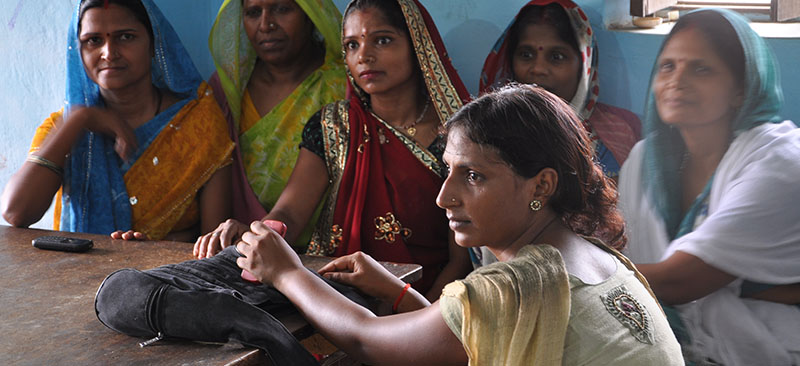
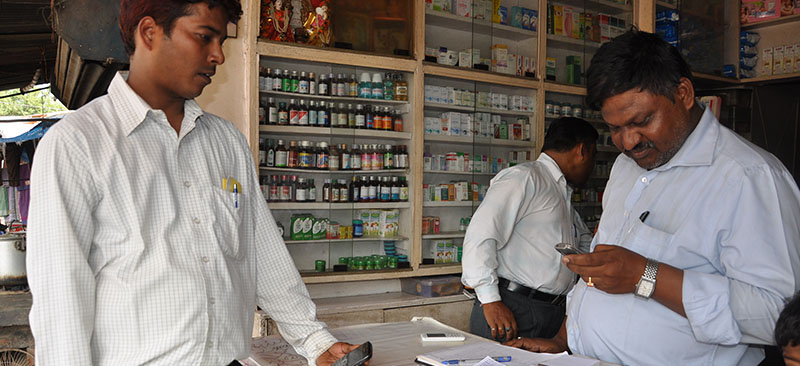
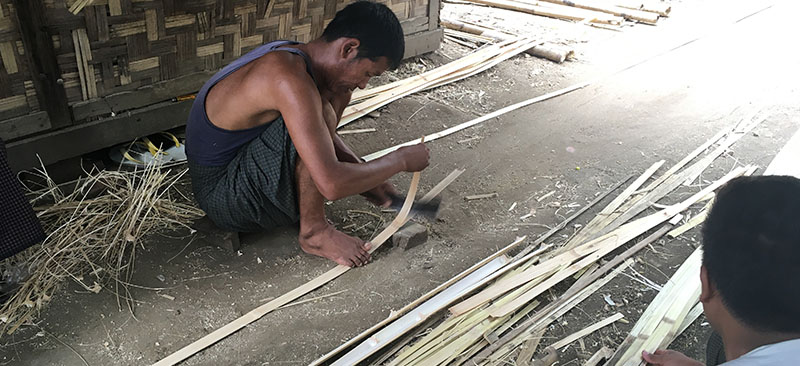
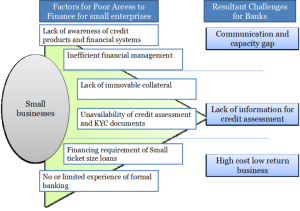 The reasons for such dismal access to finance by small businesses are ingrained in the very business and financial nature of the enterprises. On the demand side, small businesses have limited managerial capabilities and financial management skills, lack appropriate documents and require small ticket size loans. On the supply side, banks lack credit information about the client segment, perceive small businesses to be risky, and see financing to small enterprises as a low revenue activity with high costs of customer acquisition and servicing.
The reasons for such dismal access to finance by small businesses are ingrained in the very business and financial nature of the enterprises. On the demand side, small businesses have limited managerial capabilities and financial management skills, lack appropriate documents and require small ticket size loans. On the supply side, banks lack credit information about the client segment, perceive small businesses to be risky, and see financing to small enterprises as a low revenue activity with high costs of customer acquisition and servicing.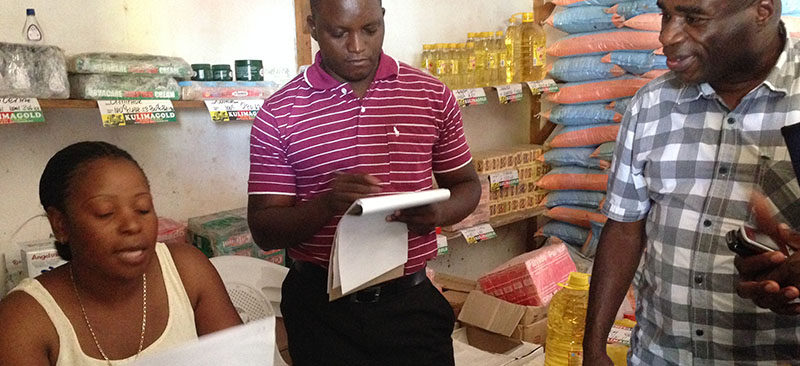
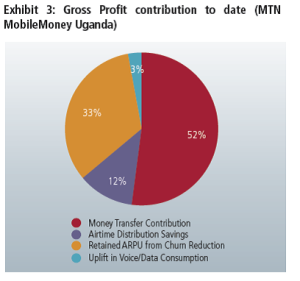 “For MTN Uganda, these numbers are exciting. We found that indirect benefits unique to MNOs – including savings from airtime distribution, reduction in churn, and increased share of wallet for voice and SMS – combined to account for 48% of MobileMoney’s gross profit to date” – Paul Leishman in MMU’s “
“For MTN Uganda, these numbers are exciting. We found that indirect benefits unique to MNOs – including savings from airtime distribution, reduction in churn, and increased share of wallet for voice and SMS – combined to account for 48% of MobileMoney’s gross profit to date” – Paul Leishman in MMU’s “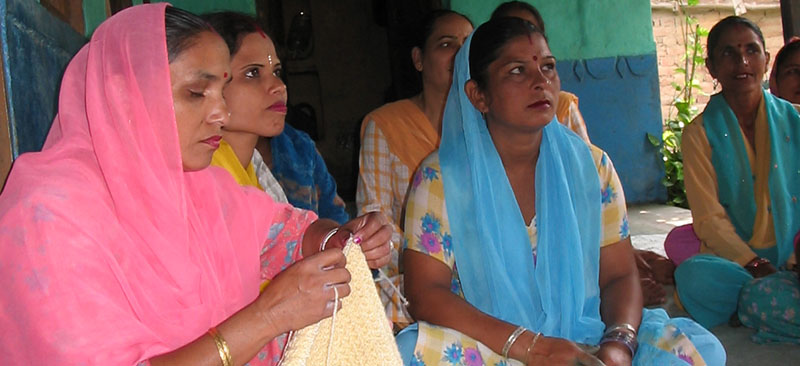
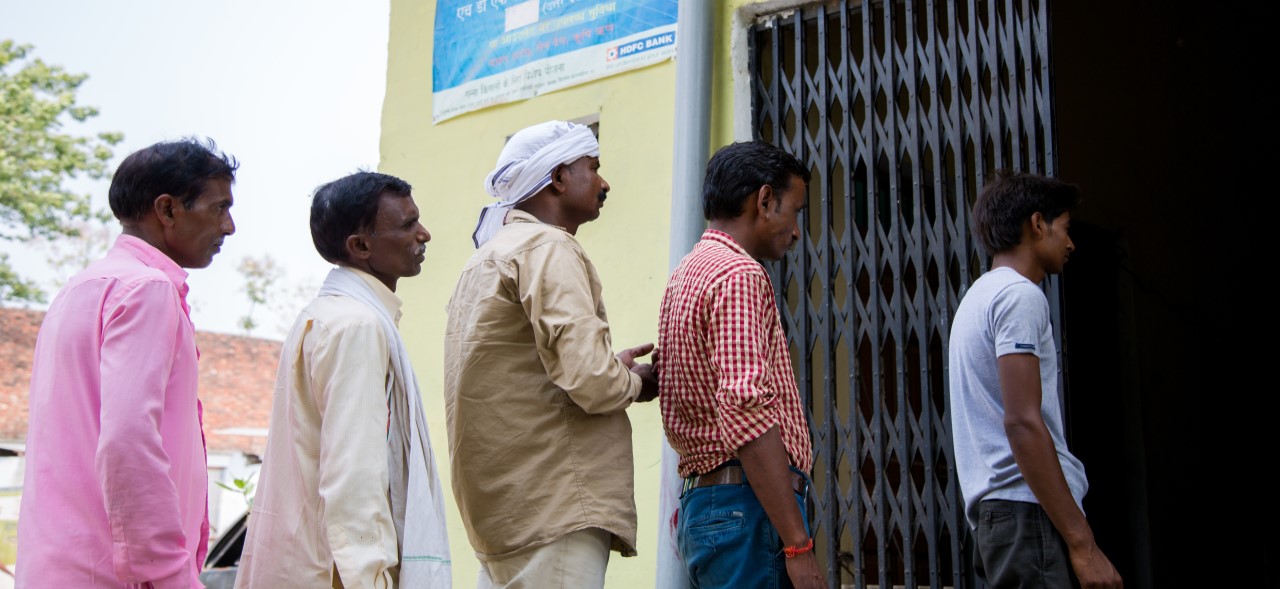
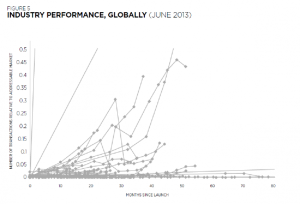 Let’s first look at the needs of the MNOs. Mobile money business has three drivers: (1) scale; (2) throughput and (3) yield. Very few MNOs (out of 219 deployed so far) have witnessed a hockey stick growth with mobile money deployments
Let’s first look at the needs of the MNOs. Mobile money business has three drivers: (1) scale; (2) throughput and (3) yield. Very few MNOs (out of 219 deployed so far) have witnessed a hockey stick growth with mobile money deployments